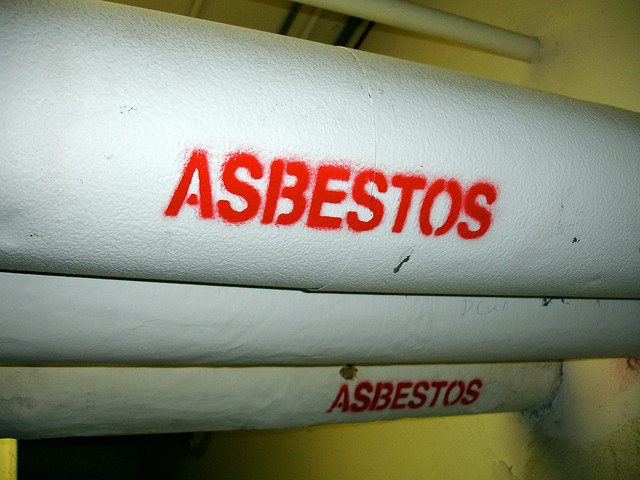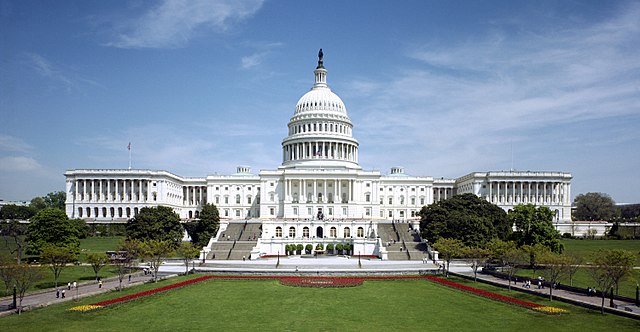By Bob Sussman, former Senior Policy Counsel to EPA Administrator Lisa Jackson
On April 29, Mr. Shimkus convened a hearing of the Environment and Economy Subcommittee of the House Energy and Commerce Committee to solicit reactions to the latest Republican rewrite of the Toxics Substances Control Act (TSCA).
Not surprisingly, industry witnesses hailed the new draft as “go[ing] a long way to making chemical regulation in the US both more effective and efficient” and achieving “substantial reforms” to the beleaguered law.
But Jim Jones, the Assistant Administrator responsible for the EPA chemicals program, had a different perspective. He singled out serious flaws in the draft that would preclude it from creating a viable system for managing chemical risks and broadly hinted that the President might veto an enacted bill resembling the House draft. At the core of Jones’ critique was the draft’s continued reliance on cost-benefit analysis in regulating unsafe chemicals, an approach responsible for the law’s widely-recognized failure to achieve meaningful risk reduction over its 35-plus year history.
How much should cost be considered in evaluating chemical safety?
Section 6 of the initial House draft had been broadly criticized for incorporating cost and other economic factors throughout the assessment and management of chemical risks. In response, the House drafters introduced the new concept of a “risk evaluation,” based purely on health and environmental factors, as the first step in taking action on high-priority chemicals. But this solved only part of the problem. When it came to rulemaking to address significant risks identified in this evaluation, section 6(c) of the House draft authorized EPA to impose restrictions only where it determined that these risks were “unreasonable.” It also directed the agency to show that the restrictions imposed were “cost-effective” and develop an analysis showing that “technically and economically feasible” substitutes for the regulated chemical would be available and would “benefit human health or the environment, compared to the” uses of the regulated chemical to be restricted.
Jones emphasized in his testimony that, despite some semantic adjustments, these provisions were no different from the “unreasonable risk” framework that had effectively paralyzed regulation of existing chemicals under section 6 of the existing law. Based on legislative history and court decisions, the term “unreasonable risk” has been understood to require a quantification of the risks posed by a chemical and the benefits of restricting it weighed against the costs to industry and other economic impacts of these restrictions, taking into account the comparative risks and benefits of alternatives to the targeted substance. Using the tools of economic analysis, EPA must demonstrate that benefits offset the costs; otherwise the risk would be considered “reasonable.” Moreover, section 6 imposes the further obligation on EPA to impose the “least burdensome” requirements, i.e. those which keep costs to a minimum compared to other regulatory restrictions.
An evaluation of the benefits and costs of significant regulations is a useful tool in policy-making and has been conducted for major rules under a series of presidential executive orders dating back to the Carter administration. But it’s a different matter entirely to require agencies to base decisions on a rigid cost-benefit framework which rules out consideration of other factors and deprives decision-makers of judgment and discretion. This goes far beyond using cost-benefit analysis as one of many policy tools. It forces the agency to run a gauntlet where all aspects of costs, benefits and alternatives must be compared with seeming exactitude and supported by data and where gaps in analysis or undocumented inferences can be exploited by challengers to bring down a rule during judicial review.
In reality, the scientific precision that backers of cost-benefit analysis demand is often simply a trap for the unwary. Even with well-studied chemicals, assigning a dollar value to reduction of health risks or avoided damage to the environment is an imperfect exercise; in many cases, these benefits cannot be quantified or have a large element of uncertainty. Yet costs can be calculated with seeming precision based on historical industry data. This often means that the costs of regulation receive disproportionate weight and benefits are undervalued because of the difficulty in quantifying them. Adding to this imbalance is the tendency to overstate the likely costs of regulations by assuming that historical cost data is an accurate predictor of future industry behavior; in fact, industry is skilled at reducing costs through new technology, product reformulation and changes in raw materials. All these factors bias cost-benefit analyses toward under-protection of health and the environment and increase the burden of proof on agencies forced to defend regulations in court.
Learning from the asbestos case

The pitfalls of cost-benefit analysis were starkly on display in the 1991 Corrosion Fittings decision of the Fifth Circuit Court of Appeals invalidating EPA’s use of TSCA section 6 to phase-out most uses of asbestos, a known carcinogen based on unassailable scientific data that had caused thousands of deaths. EPA’s rule was ten years in the making, cost several million dollars and was supported by voluminous reports and studies. Nonetheless, the court found that the record did not provide “substantial evidence” that EPA had “consider[ed] each regulatory option, beginning with the least burdensome, and the costs and benefits of regulation under each option”, including the comparative risks of asbestos and all possible substitutes.
Since the demise of the asbestos rule, rule making under section 6 has come to a virtual standstill. Why would this change if a revised TSCA retains the very cost-benefit framework that was EPA’s undoing in Corrosion Proof Fittings? It wouldn’t. The hurdles of collecting and analyzing extensive cost and benefit information for the regulated chemical and all possible alternatives and demonstrating benefits that exceed costs, coupled with the threat of judicial rejection for errors or gaps in the record, would make section 6 rule making a difficult, resource-intensive endeavor with uncertain payoffs, just as it is now.
TSCA is among a small handful of health and environmental statutes that base the level of protection on cost-benefit balancing. Nearly all of the other laws implemented by EPA use a different approach. Ambient air quality standards under the Clean Air Act must protect the public health with an adequate margin of safety, regardless of cost. Cost is a factor in setting emission limits for hazardous air pollutants under the Act but only for the purpose of determining the maximum degree of emission reduction achievable. The Clean Water Act is similar: effluent limitations for point sources must require the best practicable control technology, with cost as a factor in setting limits. The Occupational Safety and Health Act requires a showing of “significant risk” before restricting workplace exposure to chemicals but, once such a risk is identified, OSHA must set a standard that “most adequately assures … that no employee will suffer material impairment of health or functional capacity.” The Food Quality Protection Act, which governs exposure to pesticides in food, goes even further in requiring protection against risk; it directs EPA to set standards which assure a “reasonable certainty of no harm.”
Opinions differ on the effectiveness of these laws but all have a record of accomplishment in protecting health and the environment which far surpasses EPA’s dismal record under TSCA.
In the mid-1990s, Republicans in Congress pushed hard for “regulatory reform” legislation that would have required across-the-board cost-benefit balancing, including under all health and environmental statutes. But concern was raised that this requirement would paralyze agency decision making and weaken the standard of protection that Congress had built into specific laws. As this argument gained traction, the proposed legislation stalled. Its rejection evidenced widespread skepticism of cost-benefit balancing as a statutory driver for health and environmental protection.
This history should give the House serious pause as it considers going down the cost-benefit road again in amending TSCA.
The path forward

Although some might suggest otherwise, rejecting cost-benefit balancing is not the same thing as precluding consideration of cost in decision-making. Many of the laws cited above allow economic factors to be taken into account but emphasize health and environmental protection as the primary goal of regulation and look to agency judgment in weighing cost concerns against public health objectives.
Congress should follow this model in reforming TSCA. If the risk evaluation on a chemical demonstrates that the chemical presents a significant risk of harm, rule making should have the goal of assuring that this risk is eliminated – i.e. that EPA places restrictions on manufacture, processing, use, distribution or disposal sufficient to remove the significant risk. (Note: this does not mean eliminating all risk but rather assuring that any remaining risk is insignificant.) Providing that its rule achieves this minimum level of protection, EPA should be free to consider cost and other non-risk considerations in selecting the specific requirements it imposes.
It should also have the authority to grant exemptions from some or all of these requirements upon a sufficient showing that the exemption is necessary to ensure national security or avoid significant disruption to the national economy, or that the restricted chemical performs a critical or essential use for which no technically or economically feasible safer alternative is available. By accommodating these considerations through an exemption process, EPA would not bear the heavy burden of collecting and analyzing technical and economic data that are difficult to obtain but would look to industry to document the hardship that would warrant an exemption. This would streamline the rule making process, conserve EPA resources and reduce its vulnerability to legal challenges based on the claimed inadequacy of its economic analysis. At the same time, there would be a mechanism for addressing legitimate and substantiated economic concerns and providing relief.
It’s surprising and troubling that House Republicans and industry would support a process that could result in a science-based determination that a chemical threatens the public with a significant risk of harm but then fails to eliminate the risk because cost considerations prevail over health protection. Surely major companies whose products are household names would not want to explain to consumers why they have subjected the public to known significant risks for economic advantage. Nothing could be less conducive to public confidence. Responsible companies who learn of adverse data about their chemicals normally respond proactively by changing manufacturing processes or ingredients, imposing workplace controls or restricting uses. The public will expect EPA to require these steps upon finding that a chemical presents a significant risk, hopefully with industry’s cooperation but if necessary without it. To tie EPA’s hands with a required cost-benefit analysis that delays or undercuts public health protection will only deepen public suspicions that neither government nor industry is committed to chemical safety.
About Bob Sussman:
Bob Sussman recently completed four and a half years of service in the Obama Administration, first as C0-Chair of the Transition Team for EPA and then as Senior Policy Counsel to the EPA Administrator. In this position, Bob functioned as the Administrator’s principal policy advisor, providing oversight and guidance on the full suite of policy issues across the Agency. Bob worked closely with all of EPA’s senior officials in Washington and the Regions. He also played a key role in EPA’s interface with OMB, CEQ and other White House offices.
Bob served in the Clinton Administration as the EPA Deputy Administrator during 1993-94. He was the Agency’s Chief Operating Officer and Regulatory Policy Officer, testified frequently before Congress and represented EPA at several international meetings.
Bob is a magna cum laude 1969 graduate of Yale College and a 1973 graduate of Yale Law School, where he was an editor of the Yale Law Journal. Bob clerked for Judge Walter K. Stapleton of the Third Circuit Court of Appeals.




